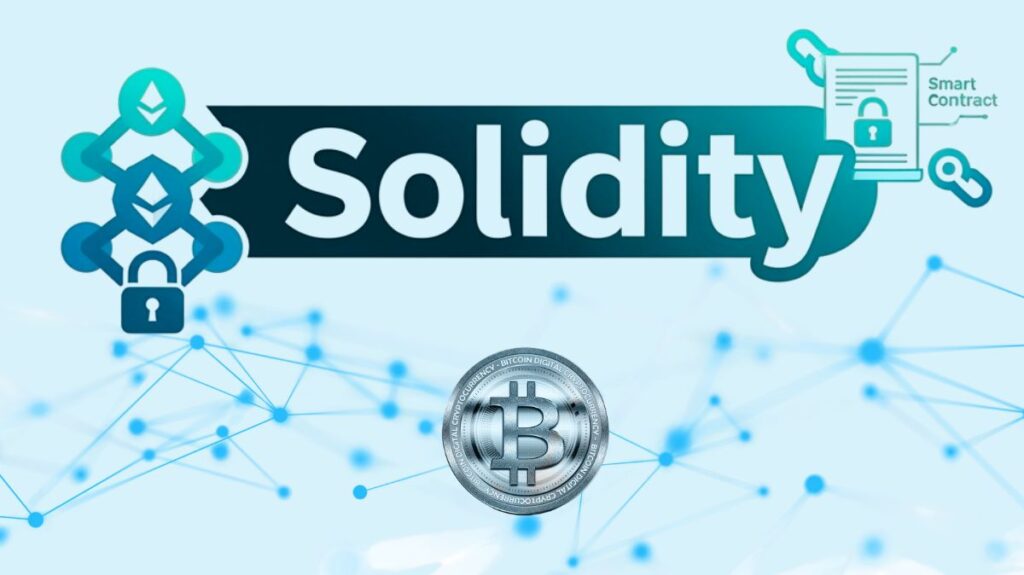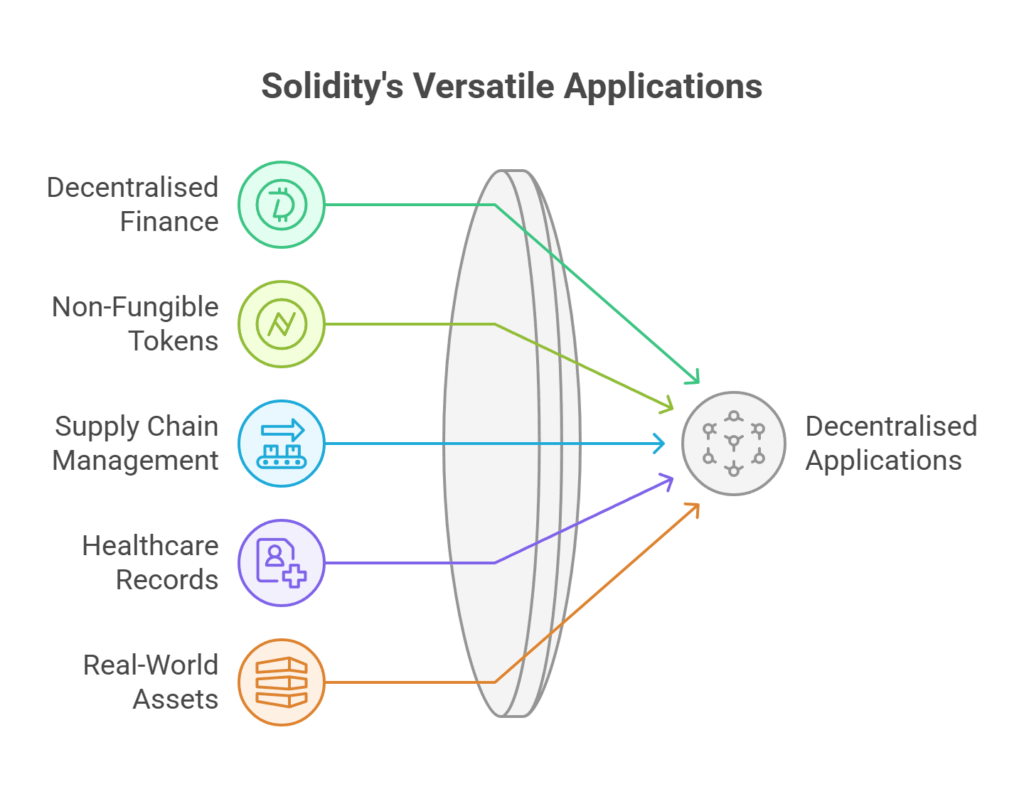What is solidity in blockchain

Solidity is a high-level, object-oriented programming language designed for Ethereum smart contracts and most blockchains and DLT systems that support Ethereum Virtual Machines. Contract-oriented and statically typed.
Solidity blockchain History and Origins
Ethereum’s CTO, Gavin Wood, announced Solidity in August 2014. Under Christian Reitwiessner, Ethereum Solidity built the language. Along with its first stable release, Ethereum launched its mainnet in 2015. Ethereum Foundation runs Solidity as an open-source community project. Regular updates and EIPs add new features to Ethereum.
Why Solidity Was Created
Solidity was needed because GPLs didn’t work with the EVM’s execution environment. Main causes include:
Integration of Monetary Value
Because of the way EVMs are designed, the majority of transactions contain monetary value (Ether/ETH). Solidity bridges this gap, enabling contracts to manage petrol expenses and Ether payments.
Blockchain-Specific facilities
Solidity has built-in facilities for managing account addresses, rule descriptions, and transaction reversals, which are necessary for smart contract creation.
Restricted Execution Environment
To ensure consistency across blockchain nodes, smart contract code runs in a restricted “sandbox” environment, which calls for a unique programming language.
Turing Completeness
Solidity is a Turing-complete language, which means it can express and run any algorithm by simulating every logical step of problem-solving, in contrast to Bitcoin’s more constrained scripting language. This lets programmers add complex logic and functionality to smart contracts.
Features
Solidity combines usability and robustness, inspired by popular languages:
- Type variables before using them. This enhances code dependability and identifies compilation-time data type interpretation issues.
- Solidity employs “contracts,” like “classes” in other OOP languages. Agreements define functions, state variables, and structures.
Language and syntax affect:
- JavaScript uses if, for, and while loops and curly brackets.
- C++ inheritance, function overloading, and user-defined types are used.
- Python-inspired features include multiple inheritance, super, and decorator-like modifiers.
- Programmers can reuse and modularise code with inheritance.
- Helps define and use libraries and interfaces, which promotes code modularity and reuse.
- Event Handling: Contracts can emit events that external applications can track and log. When integrating with front-end code (DApps), they are helpful.
- Application Binary Interface (ABI): Enables external apps to communicate with a smart contract and supports certain type-safe operations within the contract.
- Modifiers are unique structures that allow access control and validation by defining criteria or rules for accessing data or functions.
- Error Handling: Offers pre-built functions such as assert(), reverse(), and require() to handle errors and undo state changes in the event that conditions are not satisfied.
- Gas and Optimisation: Ether or the chain’s native currency is used to pay for the “gas” that smart contracts use to execute. Optimisers are incorporated into Solidity compilers to produce bytecode that is efficient and lowers gas expenses.
How Solidity Works
Developers specify functions, state variables, and contract logic in Solidity for smart contracts. A two-step compilation and execution mechanism is then applied to this code:
- Composing and Gathering: Two outputs are produced by the Solidity Compiler:
- EVMs execute compiled, bytecode low-level machine instructions.
- ABI: A JSON file that external programs use to understand the contract’s events, input/output types, and functions.
- The Ethereum Virtual Machine (EVM) runs smart contracts. It manages the blockchain contract and runs the bytecode.
- Solidity contracts store their bytecode on a specific address on any EVM-enabled network.
- Users can contact the deployed contract by sending transactions to its address. These transactions can call functions, change contract state, or execute logic.
- After reading the bytecode, the EVM performs the commands, which may include talking with other contracts, reading or writing storage, or calculating.
- Every EVM operation requires gas, which is paid for in Ether (ETH) or the chain’s currency. Complex operations require more calculations and gas.
Also Read About What Is JSON RPC API? Powers Node Communication & DApps
Solidity Uses

- Solidity lets developers build dApps with functionality in many fields:
- Decentralised Finance comprises DEXes (Uniswap, SushiSwap), lending protocols (Aave, Compound), and stablecoins.
- CryptoPunks, Bored Ape Yacht Club, Decentraland, and Axie Infinity use Non-Fungible Tokens.
Supply chain management: Walmart for fruit and Everledger for diamonds enable food safety and provenance monitoring. - Healthcare Records: Keeps track of prescription distribution (e.g., MediLedger) and manages medical data (e.g., Medicalchain).
- Real-World Assets (RWAs): Makes it possible to tokenise artwork (like Masterworks) and real estate (like Propy).
- Additional uses include the creation of contracts for multi-signature wallets, crowdfunding, blind auctions, and voting.
